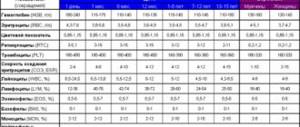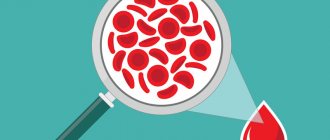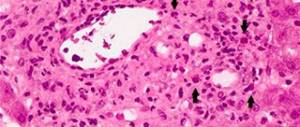The level of c-reactive protein (CRP) increases and decreases depending on whether there is currently a focus of inflammation in the body. Treatment of c-reactive protein is mandatory and takes place in conjunction with comprehensive anti-inflammatory programs. Inflammation is defined as “redness, swelling, pain and/or a feeling of heat in an area of the body. It is a protective response to injury, disease, or tissue irritation.”
When you are not sick or injured, your C-reactive protein level is normal. But when something signals the body to heal, C-reactive protein levels rise to signal inflammation. Once you begin to recover and your symptoms subside, this number should return to normal.
This is why CRP testing and treatment are always carried out by doctors. This helps determine whether a patient's treatment plan is working, in addition to assessing whether he or she is at risk for problems related to chronic inflammation (considered the root cause of many diseases), including heart disease.
What is C-reactive protein
The definition of C-reactive protein (or CRP) is “a protein produced by the liver that is released into the bloodstream in response to inflammation.
This molecule is a member of the pentraxin family of proteins. It is secreted primarily by liver cells in response to various inflammatory cytokines and can grow very rapidly. This occurs when the body perceives a threat, including injury or recognition of foreign molecules in the body.
To a lesser extent, CRP is released by muscle cells, macrophages, endothelial cells, lymphocytes and adipocytes.
C-reactive protein levels can increase 1000-fold at sites of infection or inflammation.
Emerging research suggests that CRP plays an important role in inflammatory processes, including by altering pathways involved in apoptosis, phagocytosis, nitric oxide release, and the production of anti-inflammatory cytokines.
C-reactive protein treatment
Signs of elevated CRP
In itself, an increase in CRP does not have clinical manifestations. Symptoms depend on the underlying disease. The following symptoms allow one to suspect an inflammatory process in the body:
- increased body temperature;
- malaise, aching bones;
- chills;
- sweating;
- headache.
Other signs of diseases in which CRP increases:
- prolonged cough;
- weight loss;
- loss of appetite;
- yellowness of the skin;
- pain in the heart area;
- stomach ache.
To make a diagnosis, the C-reactive protein value alone is not enough; additional examination is required.
Causes of elevated C-reactive protein
What can cause high levels of C-reactive protein? The #1 reason CRP levels rise is due to inflammation, which is how your body responds to injury, infection, and threats. Research shows that some major causes of inflammation include:
- Bacterial infections, mild or severe. CRP in your blood rises for several hours after a serious infection. Infections that can increase CRP include tuberculosis, pneumonia, and sepsis.
- Fungal or viral infections
- Inflammatory bowel diseases
- Autoimmune diseases
- Bone infections (osteomyelitis)
- Swelling of the blood vessels in the head and neck (called giant cell arteritis)
- Diabetes
- Smoking cigarettes
- Obesity and obesity
- Pregnancy
- Food allergies that damage the gut
- Lack of exercise
- Excessive alcohol consumption
Conclusion
Since C-reactive protein is synthesized in response to necrotic changes in tissues and the occurrence of an infectious disease, its determination is necessary for accurate early diagnosis. They also study it to monitor how successful the therapy is. It is better not to independently diagnose an increase in the level of C-reactive protein in the blood, but to entrust this to specialists - a rheumatologist, cardiologist, oncologist, surgeon. Indeed, to determine the cause of the disease, accompanied by an increase in the concentration of CRP, it is necessary to conduct an additional examination of the patient.
Symptoms
When C-reactive protein levels are high, symptoms associated with an inflammatory response occur. These may include:
- pain,
- redness,
- swelling around the injury
- fever and chills,
- rapid breathing and heart rate,
- nausea and vomiting,
- development of autoimmune disorders such as arthritis and lupus. This can cause swelling and pain in the joints, morning stiffness, fatigue, weight loss and low fever.
- development of other chronic diseases.
Is high CRP a sign of cancer? This may be a sign of cancer of the lymph nodes (called lymphoma). This is not always the case as there are many reasons why levels can increase.
What does high CRP mean for heart health? High levels may indicate inflammation in the arteries of the heart. This may increase your risk of having a heart attack or developing other heart problems such as coronary artery disease, atherosclerosis, or stroke.
C-reactive protein test
What is the C-reactive protein test used for? It measures the level of C-reactive protein (CRP) in your blood. This type of test can be done on both adults and children, even newborns, to check for signs of diseases.
Changes in CRP levels may indicate that the treatment you are receiving is working or not working. CRP levels often rise until you recover, so if a CRP test finds that the number is starting to drop, it's a good sign that you're overcoming an infection, injury, etc.
This type of test detects CRP levels, but does not show where inflammation is occurring in the body, and not necessarily what is causing it.
Related articles:
- Homemade egg white mask for wrinkles
- The functions of prostaglandins are the culprits of inflammation, and...
The test is performed using a blood sample taken from a vein in the arm. You may be asked to avoid eating and drinking (to the point of fasting) for 8 to 12 hours before taking a blood sample.
Once the results are back, if the levels indicate a problem, other tests for inflammatory markers can be done to find out what the underlying health problem is. A panel of tests that may be used to make a diagnosis includes: cultures, white blood cell count, red blood cell count, platelet count, blood glucose, chest x-ray, and physical examination.
Normal range of SRP
Here is a basic C-reactive protein level chart that most doctors use:
- Some experts consider a normal CRP level to be less than 10 mg/L. However, some recent studies suggest that any level above 1-2 mg/L may indicate a problem, especially related to heart health.
- Less than 1 mg/L means you have a low risk of heart disease, while levels between 1 and 3 mg/L mean you have an increased risk of health problems. Above 3 mg/L is currently considered to be an indicator of “high risk of cardiovascular disease.”
- Serious bacterial infections usually cause CRP levels to rise between 150 and 350 mg/L.
- Values greater than 100 mg/L may occur due to uncomplicated infections caused by adenovirus, cytomegalovirus, and viruses that cause influenza, measles, and mumps.
- Viral infections usually cause CRP levels to rise to around 20-40 mg/L. (much less than with bacterial infections).
What is the level of C-reactive protein in children?
The same values as above apply to children, according to an article published in the journal American Family Physician.
What Causes Low C-Reactive Protein Levels
The use of NSAIDs (non-steroidal anti-inflammatory drugs), aspirin and steroids can cause CRP levels to fall below normal.
Reasons for increased CRP
DRR standards must remain within the specified minimum. Even a slight excess of the level already indicates the presence of an inflammatory process. After all, this protein is designed to be responsible for our immune response to any foreign invasion.
The most common causes of increased serum C-protein concentrations are:
- The presence of an acute infectious process of any origin: bacterial, viral, or fungal. In the case of meningitis or neonatal sepsis, as well as tuberculosis, the increase can reach 100 mg/l or more. With viral processes, the rate will be significantly lower.
- Autoimmune chronic diseases, such as Crohn's disease, vasculitis, rheumatoid arthritis, cause a high concentration of reactive protein, which directly depends on the severity of the patient's condition.
C-reactive protein in the blood can be elevated in pathological conditions and diseases such as acute infectious diseases of a viral nature, in cases of exacerbation of existing chronic inflammatory processes, most often of an immunological nature.
In cases where the integrity of the tissues and membranes of internal organs is injured, the quantitative indicator of C-reactive protein also increases.
Trauma (wounds, ruptures), deep and extensive burns, and surgical interventions (deliberate violation of integrity) contribute to tissue rupture.
CRP may also be increased during inflammatory processes that are in remission or in the non-acute period of the chronic form.
This is explained by the fact that any inflammation can cause complications and lead to diseases of the cardiovascular system. The level of C-reactive protein in cancer tumors is increased, and if they have metastasized, the protein level increases several times.
Also, the quantitative indicator of C-reactive protein can increase in endocrinological diseases (diabetes mellitus, hypothyroidism).
It is also increased in people with excess body weight, high blood pressure and hormonal imbalance. In the latter case, an increase in the level of C-reactive protein is facilitated by high levels of estrogen and progesterone.
In addition to diseases and pathologies, CRP can also be elevated in healthy people under the influence of certain factors and natural physiological changes in the body.
Thus, exceeding the permissible level of C-reactive protein is observed during pregnancy in women, after intense and heavy physical exertion.
Hormone imbalances caused by oral contraceptives and certain types of medications are also reflected in elevated levels of CRP.
Therefore, before taking a test for CRP, the patient always informs the attending physician and the laboratory assistant who collects the blood serum about the medications he is taking.
The CRP level may also decrease under the influence of certain types of medications.
Such a decrease is possible after taking beta blockers, antipyretic drugs, especially in case of overdose, stanines and corticosteroid medications.
All these drugs are prohibited from being taken on the eve of the study, as they can affect the test results, which will not allow the doctor to get a correct picture of the patient’s health condition.
A high level of reactive protein is observed during bacterial infection. When the inflammatory process begins, the amount of the substance increases tens and sometimes hundreds of times.
In this case, C-reactive protein in the blood serum may be elevated to 1000 mg/l. This indicator is an indication that it is urgent to begin treatment with antibacterial drugs.
An increased CRP level is most often observed in the following cases..
- With viral infection, but in this case the indicator increases slightly.
- For autoimmune diseases, in particular rheumatoid arthritis, Crohn's disease, systemic vasculitis. In such cases, the higher the indicator, the more severe the disease.
- With the development of a heart attack. As a rule, the indicator increases 18-32 hours after the attack, then gradually decreases by the twentieth day and completely normalizes by the fortieth day. A very high concentration of CRP in the blood indicates an unfavorable prognosis.
- With tissue necrosis as a result of tumor disintegration.
- In case of tissue damage due to injury, burns or frostbite.
- For chronic muscle pain.
- For oncological diseases.
- For diabetes mellitus.
- For arterial hypertension.
- For hormonal imbalance.
- In the presence of diseases of the digestive system, in particular with acute pancreatitis.
C-reactive protein in the blood is always elevated in the postoperative period, but during the normal recovery process its concentration decreases sharply.
If elevated levels persist for a long time, this indicates the development of complications or indicates rejection of the transplanted tissue.
The normal level of c-reactive protein may be exceeded, as mentioned above, for various diseases and conditions of the patient. However, depending on the reason for this increase, c-reactive protein may have a different indicator:
- If the reason why CRP is elevated is a viral infection or a sluggish chronic disease, then the indicator increases slightly. The level of its content in the blood increases to 10-30 mg/l.
- With a bacterial infection, the level of CRP in the blood increases tenfold. Its content can reach 40-100 mg/l. The same increase is observed with exacerbation of chronic inflammatory diseases and tissue damage.
- Myocardial infarction is also accompanied by an increase in CRP levels.
- Newborns whose c-reactive protein reaches a level of 12 mg/l are required to receive antimicrobial therapy, since such an increase may indicate sepsis.
- Burns, sepsis and severe generalized infections can increase C-reactive protein in the blood to an exorbitant 300 mg/l.
In any inflammatory process, this indicator increases very quickly. The subsequent dynamics of the disease is immediately reflected in the level of CRP content.
Therefore, it is necessary to take a control CRP blood test throughout treatment. If the level decreases, then the treatment was chosen correctly.
If c-reactive protein continues to rise or the indicator does not change, treatment should be adjusted. With proper treatment, the normal level is achieved within 6-10 days.
When interpreting the test results, the doctor pays attention to one more indicator - ESR. It also increases in the presence of an inflammatory process in the body, but not so quickly and not so rapidly.
A normal level of CRP with an elevated ESR may indicate acute intoxication of the body, as well as some other diseases.
Already based on the general interpretation of this concept, it becomes clear that C-reactive protein is very sensitive to any invasion of the body’s immune system: be it a minor injury or a malignant tumor.
But, as practice suggests, there are a number of diseases to the progression of which the level of CRP reacts particularly “eloquently”:
- Infections of a bacterial nature, of any origin and severity.
- Oncology, malignant formations, tumors, metastases.
- Excess weight is an additional burden on the body.
- Diabetes.
- Hormonal imbalance, disturbance in the concentration of hormones of the genitourinary system in the blood plasma.
- Violation of tissue integrity: mechanical injuries, operations, acute phase infarction.
- Insufficient functioning of the cardiovascular system, pathological processes in it, which is also accompanied by low-grade inflammation.
- Rheumatism.
- Fungal and parasitic infections.
- Diseases of the gastrointestinal tract and main digestive organs.
- Progression of chronic tonsillitis and other focal infections.
- Complications after surgery, resuscitation.
- Autoimmune diseases (systemic vasculitis).
- Tuberculosis of closed or open form.
- Meningitis.
- Damage to the respiratory system, in particular the bronchial tree and lungs.
- Sepsis of newborns.
- Lack of Omega-3 fatty acids and other antioxidants.
- Ischemic stroke.
- Atherosclerosis.
- Threat of premature birth during pregnancy.
Also no less dangerous is the use of oral contraceptives, the presence of bad habits, and a love of junk food. We should not forget about the aspect of heredity as regards hypertension and diseases of the cardiovascular system.
Why does CRP increase in the blood? This is how the body reacts to inflammation or tissue death. The more severe the inflammation, the more C-reactive protein will be found in the blood serum.
How dangerous is it for a person if the analysis showed that C reactive protein is elevated? Causes (more than 10, but not higher than 30 mg/l) are usually associated with infection.
It can be viral (with minor deviations), bacterial (up to 100 mg/l) or fungal. With proper treatment, after 5-6 days, CRP will begin to return to normal, and the patient will recover.
Unfortunately, high CRP can indicate more terrible and intractable diseases, namely:
Since C-reactive protein in the blood is an almost universal indicator of ill health in the body, an increase in its content is characteristic of many diseases.
The reason is that the function of the protein is to bind to the damaged cell membrane and protect it.
C-reactive protein treatment
Prevention and treatment of CRP depends on what is the underlying cause of the inflammation. The best way to “naturally” treat high levels is to identify the root cause of the inflammatory response and then make lifestyle or medication and supplement recommendations based on that finding.
Traditional nutritionist recommendations for healthy habits that help protect against heart disease, such as a balanced diet, smoking cessation, and exercise, are also commonly implicated in the treatment of C-reactive protein.
Follow an anti-inflammatory diet
To protect yourself from inflammation in the heart and elsewhere, it is recommended to eat a whole foods diet, such as the Mediterranean diet. This type of nutritious diet includes a variety of vegetables, fruits, fresh herbs, fish, whole grains, legumes and nuts.
Eating foods high in antioxidants, such as vitamin C, A and E, plus probiotic foods can help support your immune system. One study found that high intake of vitamin C (1000 mg/day in supplement form) helped reduce CRP levels in people with levels greater than 1 mg/L.
It's also important to consider any food allergies you may suffer from, as well as avoid foods that cause flare-ups if you have inflammatory bowel disease. These foods may include: gluten, dairy, caffeine, alcohol, and others depending on the individual.
Give yourself physical activity
Exercise is an effective way to manage inflammation, prevent and treat CRP, and reduce risk factors for elevated CRP, such as high blood pressure and obesity. The general recommendation for adults is to get at least 150 minutes of moderate exercise per week.
Consult your doctor for anti-inflammatory medications
If infection is the underlying cause of elevated C-reactive protein, antibiotics may be required for recovery.
Your doctor may tell you to take certain medications to reduce your chance of developing complications, such as cholesterol-lowering medications or aspirin if you are at risk for developing heart disease.
It is important to work with your doctor to manage any existing medical conditions that are associated with high levels of inflammation. This especially applies to diabetes and obesity, but also if you have high blood pressure and high cholesterol. You may need to take medications to control these risk factors if lifestyle changes alone are not enough.
You may also need to adjust the use of other medications depending on what test results you get. For example, birth control pills and hormone replacement therapy affect markers of inflammation.
Contact a nutritionist to select natural anti-inflammatory remedies. Curcumin, vitamin C and magnesium may be recommended to help treat C-reactive protein and normalize its levels.
Avoid other risk factors (such as smoking, alcohol, obesity)
Do what you can to reduce your risk of inflammation by avoiding things that are generally harmful to your health. This includes smoking, drug and alcohol use, overeating, lack of exercise and avoiding treatment for your illnesses.
Norm
C-reactive protein levels are measured in mg/L. Venous blood is used for the study. Depending on the method and reagents chosen, results may vary between laboratories. Therefore, it is necessary to draw conclusions about a possible increase in the indicator based on data from one laboratory.
| Patient category | SRP concentration, mg/l |
| Newborns | No more than 0.6 |
| Children 1 week old | No more than 1.6 |
| Adults, men and women | No more than 5 |
| Pregnant women | Up to 20 |
As can be seen from the table, the level of CRP increases during pregnancy, which is considered normal.
Based on the results, the risk of developing pathologies of the cardiovascular system of the body can be determined.
- A low probability of pathology and complications is observed when the protein concentration is 1 mg/l or less.
- Average risk – at a concentration of 1-3 mg/l.
- High risk – at levels above 5 mg/l. In healthy people, this indicates an imminent disease of the heart and blood vessels; in those who already have heart pathology, this indicates a complication of the course of the disease.
Precautionary measures
Just because your CRP test results show that it is elevated does not mean you should panic. These results also do not provide a complete picture of your health and must be combined with other test results.
Talk to your doctor to determine what may be contributing to your symptoms and to develop a treatment plan for your C-reactive protein and inflammation in general. This includes a history of any medical conditions, use of medications and birth control pills, as well as stress levels, diet and exercise.
Final Thoughts
- What is C-reactive protein? It is a protein produced in the liver that circulates throughout the body in response to inflammation.
- CRP levels rise when you are sick or injured and return to normal (low levels) when you are healthy and recovered.
- A high level of CRP means you have some type of inflammation in your body, which can be caused by: bacterial, fungal or viral infections, injuries, inflammatory bowel disease, autoimmune diseases, allergies and unhealthy lifestyle choices.
- The C-reactive protein blood test is used to diagnose inflammatory diseases and also to monitor response to treatment.
- If you have elevated C-reactive protein in your blood, this means that you need to undergo additional testing to identify the causes of inflammation. These could be infections, autoimmune reactions, etc. Treatment for the causes of high CRP may include the use of medications, dietary changes, and lifestyle changes.
In what cases is a CRP test prescribed?
A CRP test is prescribed to diagnose various ailments. These include inflammatory processes caused by infections or bacteria entering the body, in autoimmune disorders, to study the risk of developing pathologies of the heart and circulatory system. The level of C-reactive protein after surgery is studied to monitor the patient’s health status and obtain information about drug therapy.
C-reactive protein is synthesized by the body of all people. This process occurs in the liver, and a small level of CRP (up to 1 mcg/ml) is quite acceptable even in the blood of a healthy person. If a person gets sick and develops inflammation, the level of C-reactive protein increases, which is reflected in the results of clinical studies.
Unlike ESR, which increases in the circulatory system only after a day, C-reactive protein can be increased within 6 hours from the time the virus entered the body and began its destructive activity. In case of minor inflammatory processes, the CRP rate increases by several units, and in case of serious diseases (malignant tumors, death of tissues of internal organs, etc.) the protein can be increased several times.
Therefore, C-reactive protein is usually classified as a nonspecific marker indicating the onset of the inflammatory process.
Exceeding the permissible norms of CRP in the blood is observed with any infectious or bacterial damage to internal organs.
And such an increase in the permissible norm can be easily recorded by simply referring the patient to donate blood.
In what cases can protein be increased?
Doctors note a number of diseases in which the level of C-reactive protein rises to critical levels. This:
- purulent inflammation (sepsis);
- cardiovascular diseases (heart attacks, strokes);
- diseases of the musculoskeletal system (rheumatism, arthritis, arthrosis);
- acute form of pancreatitis;
- pancreatic necrosis.
The quantitative parameter of C-reactive protein is also determined in order to assess the effect of antibiotics on the existing virus. Erythrocyte sedimentation rate is also analyzed for the same purpose, but CRP rises and falls much faster than ESR. Therefore, the norm of C-active protein is much more often used to assess the risk of developing heart diseases, complications after them and the effectiveness of preventive and postoperative treatment.
Due to its high sensitivity, the analysis for CRP shows deviations from acceptable parameters even within the most minimal limits.
How is CRP analysis carried out and what do its results indicate?
As soon as inflammatory processes begin in the body, CRP begins to increase its concentration. An excess of the norm, indicating a disease, is noted after just a few hours, and within two days its level can be exceeded tens or even hundreds of times, depending on the severity of the disease. Such an increase can only be determined by clinical analysis using high-sensitivity reagents.
Even if the patient feels completely healthy, and the norms for basic indicators are not exceeded, a positive test for a high level of C-reactive protein is possible. This condition with the data results is possible at the very beginning of the development of the disease (asymptomatic stage), when the infection has just entered the body and began its destructive activity.
Even a slight deviation of C-reactive protein from the norm can be a sign of hypertension, the risk of developing myocardial infarction or apoplexy, cerebral atherosclerosis and sudden death of coronary vessels.
You can reduce the level of C-reactive protein yourself by taking acetylsalicylic acid as a preventive measure for heart and vascular diseases. The prescription of these drugs, which reduce the synthesis of CRP and prevent possible complications, is carried out by the attending physician. He also determines the dosage and duration of taking the drugs. Alcohol in small doses also helps suppress the production of CRP, but only in alcoholic beverages of natural origin (wine, cognac). To prevent cardiovascular diseases, the patient’s weight control, regular exercise, and proper diet are also prescribed. All this helps reduce CRP levels and the risk of severe complications.
Since CRP is a nonspecific marker, it is usually considered in conjunction with other components of the blood flow. This will help assess the patient’s condition, give a prognosis for the development of the disease or cure for it, plan treatment therapy and carry out the prevention of possible diseases. But even if other indicators remain within acceptable values, and CRP is higher than normal, this should alert the attending physician. The doctor may order a repeat test. If there is pathology, other indicators will change, and CRP will become even higher. If there was an error, all indicators will remain normal.












